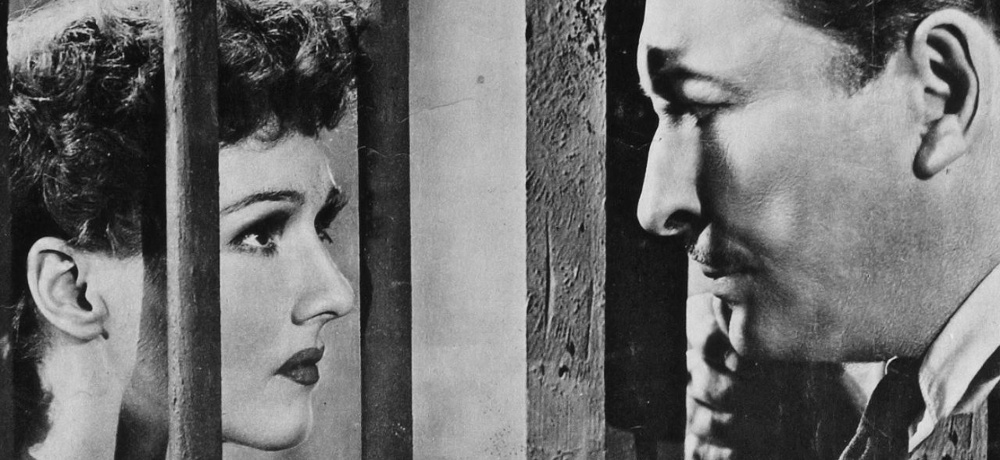


It may be a stretch to refer to Lionel Atwill as a horror icon, but damned if he wasn’t a reliable utility player in the genre through the 1930s and ’40s. As a stage-actor-turned-film-star, he seemed to be the go-to for adding a dash of British gravitas to a supporting role. In fact, he starred in every Universal-produced Frankenstein movie after Bride as different characters ranging from inspectors, doctors, and other inspectors. In fact, Mel Brooks fans will be at least tangentially aware that his work as Young Frankenstein’s one-armed Inspector Kemp being a direct parody of Atwill’s Inspector Krogh from Son of Frankenstein. Atwill also dipped his toe into the Basil Rathbone Sherlock Holmes universe, including a supporting part in Hound of the Baskervilles and even a turn as Moriarty in Sherlock Holmes and the Secret Weapon.
Like most great character actors, Atwill found his niche in supporting roles, but also found opportunity to take lead roles in smaller productions such as the 1944 mystery Lady in the Death House. Now, in some cases “smaller production” can mean “prestige arthouse,” and in other cases it’s more of the “low-budget sausage grinder” variety. Lady in the Death House is very much in the latter category, as the studio that produced it, Producers Releasing Corporation, was operated out of “Poverty Row.” This was a section of Hollywood that housed studios responsible for most of the low-budget second films often paired with bigger movies as double features at the time (hence the term B-movie).
From the time it was founded in 1939 until it folded in 1947, PRC produced 179 movies, almost none of which were made for more than $100,000 (or $1.75 million today). The company had a brief spike in popularity in 1944 with a handful of successful noir films, but for the most part, their stuff seems to have come and gone with little fanfare, including Lady in the Death House.
The film follows Atwill as Charles Finch, who appears to be PRC’s attempt at giving us the new great detective in the vein of Sherlock Holmes. But his only real hook is that although he’s known as a criminologist, he often reminds people that he’s also a psychologist. It certainly doesn’t have the intrigue of a borderline sociopath with uncanny skills of observation, but I suppose it’s something.
Anyway, the film is framed as a story he’s telling some colleagues about his most recent case involving Mary Kirk Logan (Jean Parker), a young woman who we find out is on death row after being falsely accused of murdering a man threatening to out her as the daughter of a local crime boss. And as luck would have it, should she be executed, it will be at the hands of the man she loves, Dwight “Brad” Bradford (Douglas Fowley). Young Bradford is the state’s executioner, a job he hates, but sees as a necessary evil as it’s a way to make ends meet while he continues his research to find a way to revive dead tissue. I make specific note of this plot point because it seems a delightfully macabre element that should pay off well later in the film, yes? Well, hold that thought.
Director Stefan Sekely, a Hungarian director who fled the emerging Nazi party, took on a steady stream of B-movie and television work in the U.S. His approach for Lady in the Death House indicates a journeyman work ethic where he’s just trying to get something in the can and into theaters. With a running time of 56 minutes, it’s basically an episode of Law and Order. And even in such a condensed package, Sekely isn’t afraid to throw in more than a fair share of montages. Montages make up a solid 20–30% of the film, as if Sekely is giving us the cinematic equivalent of “yadda yadda yadda” before transitioning to the next scene.
But while this is a film that clearly knows what it is (and perhaps more importantly what it isn’t), none of the actors seem to be phoning it in. Finch’s criminologist/psychologist gimmick may not amount to much, but Atwill is still charming enough to give the character a little personality. Jean Parker, who was referred to by a reporter in the ’50s as “the Liz Taylor of the 1930s,” is appealing in a warm sincerity only matched by Douglas Fowley as the physical embodiment of the phrase “aw, shucks.”
If I have one true gripe with Lady in the Death House, it goes back to that note of Bradford’s work on reviving dead tissue early in the film, which I might also add specifically mentions his preliminary success with reviving tissue damaged by electrocution. As a horror fan, this is the hook. This is the thing that piques my interest and gets me excited that maybe we’re getting some kind of kooky reimagining of the Frankenstein story (which would be fitting considering Atwill’s involvement). But here’s the thing: that plot point is literally never mentioned after the first act. We’ve been robbed of the one thing that could have made this movie stand out, and I’m more than a little irked about it.
I think what fascinates me most about Lady in the Death House is that it’s not a hidden gem, quirky oddity, or even a delightfully bad schlockfest. It’s not a film ripe for reevaluation, and it’s certainly not begging for some boutique company to give it a Blu-ray release. But it continues to survive in the ether of public domain, waiting on different streaming platforms of varying repute for the chance that someone like me might watch it on a lark and enjoy it as an artifact of the forgotten corners of Hollywood.
[Image Credit: Above image is from MUBI.]